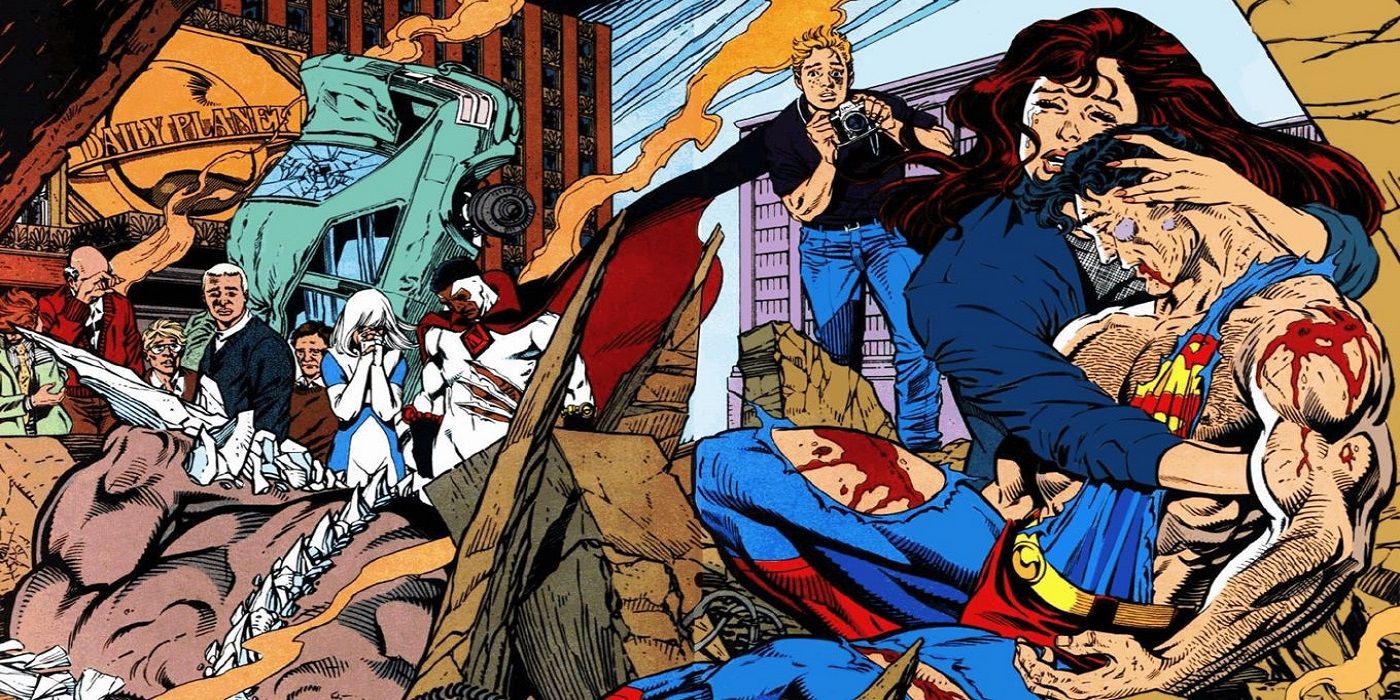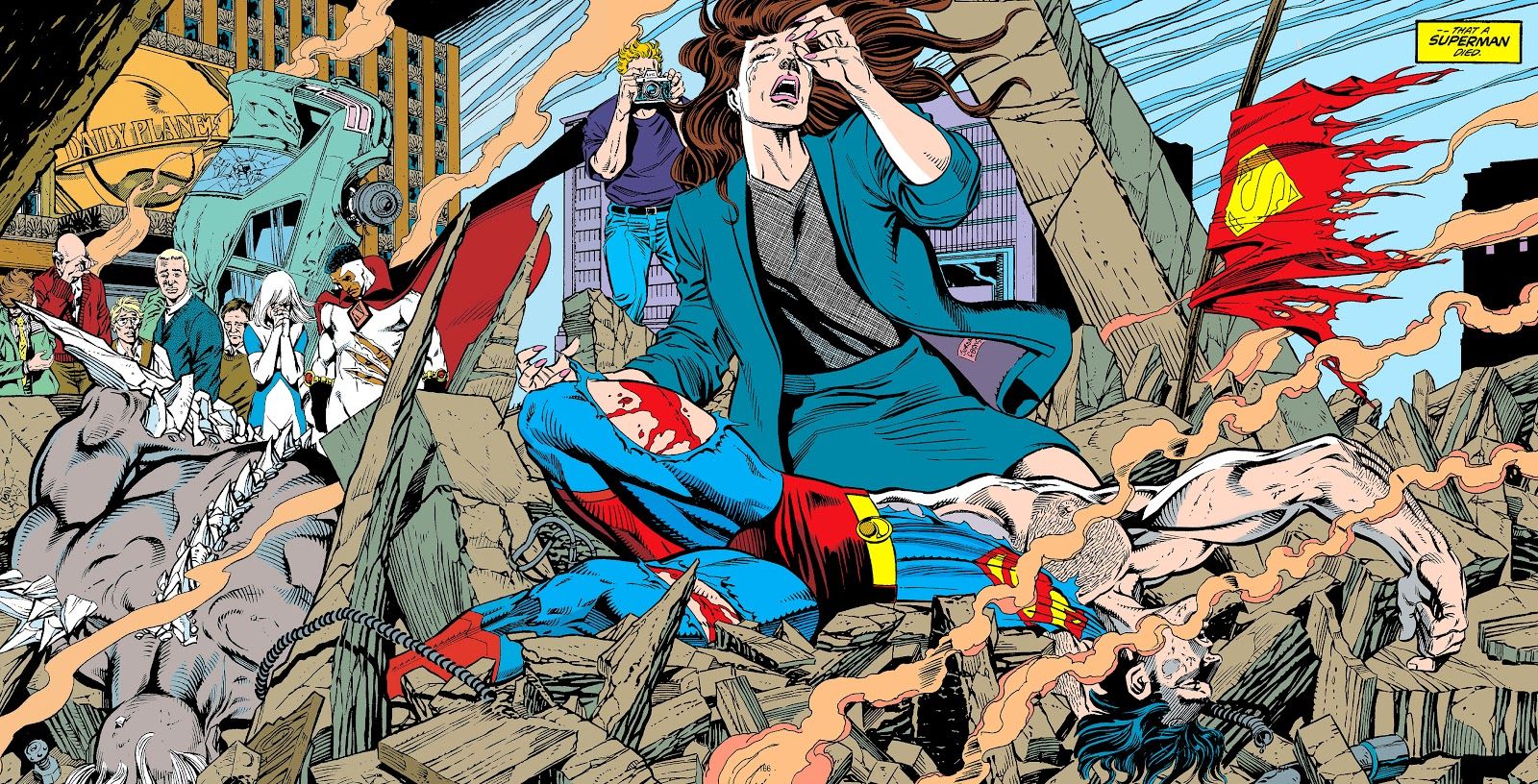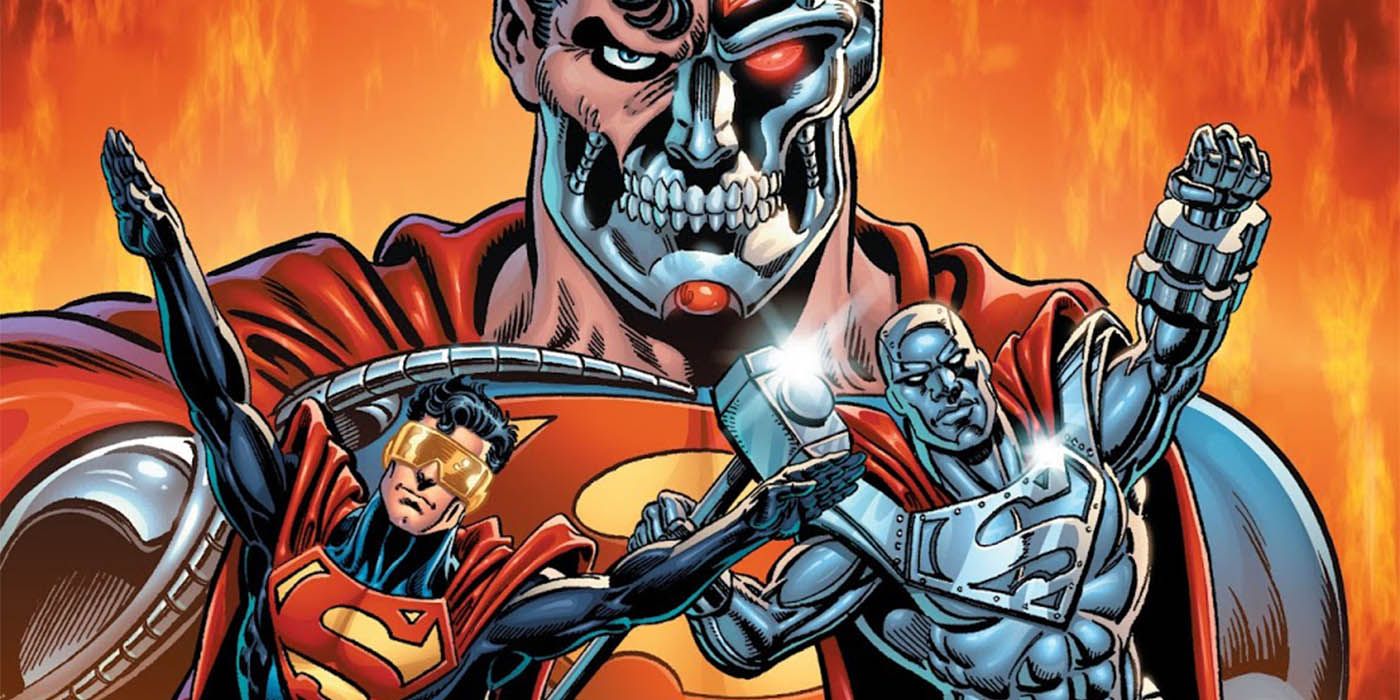One of the bestselling DC Comics stories of all time is the Death of Superman and the landmark 1992 comic book event is the subject of the latest Tales from the Dark Multiverse special, with its own sinister twist. With the revisionist one-shot issue and recent animated adaptation now available on home video, here is a look back at the event that set the tone for the American comic book industry in the 90s by killing off its most iconic superhero -- if only for several months.
After relaunching the character with the rest of the DC Universe following the Crisis on Infinite Earths, DC published a different Superman title each week including Action Comics, Superman, The Adventures of Superman and Superman: Man of Steel. The story being told across the four titles was tightly plotted by its various creative teams -- including Dan Jurgens, Jerry Ordway, Louise Simonson, and Roger Stern -- largely feeling like a weekly series following the superhero and his supporting cast in Metropolis. However, shortly after the debut of the fourth series, Simonson and John Bogdanove's Man of Steel, sales across the line began to decline in the face of Marvel's relaunch of X-Men and Spider-Man and the first wave of titles from the newly founded Image Comics.
Looking for an event-level title to drive readership interest, a planned wedding between Clark Kent and Lois Lane was postponed after a similar special episode on the popular television series Lois & Clark: The New Adventures of Superman was delayed. Ordway joked they should kill the character off instead, with the rest of the creative teams deciding it would make for an excellent story to show the world they had taken the superhero for granted. Jurgens assembled a pitch for editorial, with the teams deciding a new villain should kill Superman that would prove every inch his physical equal, if not superior. This led to the creation of Doomsday in The Man of Steel #17 by the assembled writers and artist Brett Breeding, inspired by Jurgens' own designs of the villain based on Image's early art styles.
Seen breaking from captivity below the Earth's surface from a crashed spaceship, Doomsday emerged and began a destructive rampage that would take him right to the heart of Metropolis. The Justice League and Superman attempted to stop the monster from reaching the city but even their combined might couldn't effectively slow the creature down, with the hero Booster Gold giving the creature its name after being brutally defeated by it. Vowing to stop the villain at all costs, Superman fought Doomsday alone and hand-to-hand in the streets of Metropolis, each mortally wounding one another while the shocked world watched. Relieved that the monster had been defeated seemingly once and for all, Superman died in Lois' arms in Superman #75, later interred in a tomb under a statue of the hero.
While many regular comic readers accurately assumed Superman's death was temporary, the widespread media coverage led many in the general public to assume Superman's death was permanent, significantly driving up sales, with over 2 million copies sold the first day of release before going on to sell over 6 million copies overall. To maintain the illusion that Superman was truly dead and not spoil his impending resurrection through advance solicitations, DC ceased publication of all four Superman titles for three months before introducing four replacement superheroes inspired by the Man of Steel in a world without Superman.
Four figures -- Superboy, Eradicator, Steel and Cyborg Superman -- staked their own claims to becoming Metropolis' new hero. Eventually, Cyborg Superman was proven to be the villainous Hank Henshaw, teaming up with Mongul to destroy Coast City before setting his sights on Metropolis. Superman was then revealed to have been brought back to the Fortress of Solitude by the Eradicator and resurrected through a Kryptonian regeneration matrix in the remote base. Slightly weakened, Superman teamed up with the remaining three heroes along with Supergirl and Green Lantern to defeat Henshaw and Mongul before reclaiming his mantle as Metropolis' true defender.
With many incorrectly assuming Superman's death was permanent, comic sales across DC and much of the industry declined after Superman's resurrection. However, despite the controversy, the story remains a perennial fan-favorite and hugely influential. Other DC characters would see similar temporary death or forced retirement including Batman and Green Lantern, with Hal Jordan's fall a direct consequence of the Superman story. The story would be adapted into a video game, directly inspire the climax of Batman v. Superman: Dawn of Justice and be adapted twice in animation. And it all came from a scheduling conflict with ABC.



